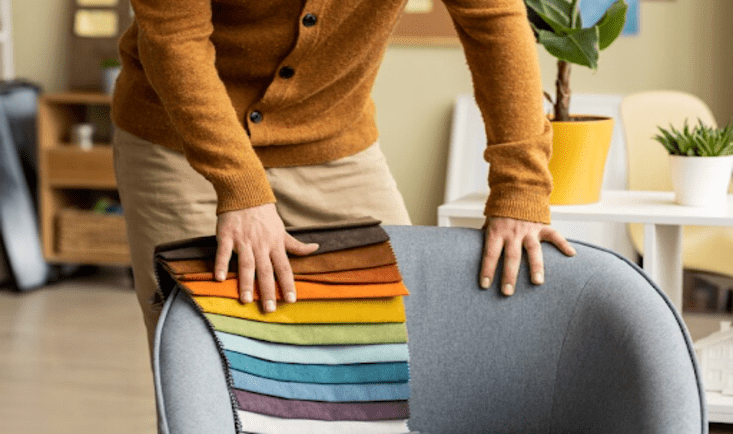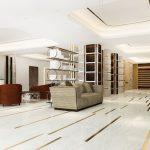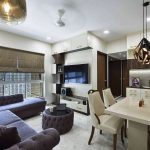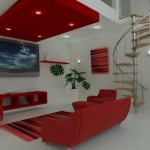
The Psychology of Color: How Interior Decorators Use Color to Create Mood and Ambiance
Have you ever walked into a room and instantly felt a certain way? Calm and relaxed? Energetic and motivated? This isn’t just coincidence. Interior decorators understand the powerful influence of color on our moods and emotions. By harnessing the psychology of color, they can create specific atmospheres within a space. This blog post will explore the fascinating world of color psychology and how Interior Decorators use it to transform your living environment.
The Science Behind Color Perception
Color isn’t just an aesthetic quality; it’s a scientific phenomenon. Light strikes objects, and different wavelengths are absorbed or reflected depending on the object’s surface. Our eyes perceive these reflected wavelengths as colors. But the journey doesn’t end there. Light signals travel to the brain, where the visual cortex and limbic system interpret them. The limbic system plays a crucial role in processing emotions and memories, which is why certain colors can evoke specific feelings.
The Emotional Palette: Colors and Their Meanings
Interior decorators have a deep understanding of how different colors affect us. Here’s a look at some popular colors and their associated emotions:
- Reds: Red is a stimulating color often linked to passion, energy, and excitement. It can add a touch of drama and sophistication to a space but use it sparingly in rooms meant for relaxation.
- Blues: Blue is associated with calmness, peace, and trust. It’s a popular choice for bedrooms and bathrooms, promoting feelings of tranquility.
- Greens: Green evokes feelings of nature, growth, and harmony. It’s a versatile color that creates a sense of balance and can be used in various spaces.
- Yellows: Yellow is a cheerful and optimistic color. It can brighten a space and promote feelings of creativity and focus.
- Purples: Purple is associated with luxury, royalty, and creativity. It can add a touch of elegance and sophistication to a room.
- Neutrals: Colors like white, black, and gray are considered neutrals. They provide a clean slate and can be used to balance bolder colors or create a minimalist aesthetic.
Remember: Color perception can be subjective and influenced by cultural background and personal experiences.
Creating Mood with Color Combinations
Understanding how colors interact with each other is essential for interior decorators. Here are some key strategies:
- Analogous Colors: Colors that are adjacent on the color wheel create a harmonious and calming effect.
- Complementary Colors: Colors opposite each other on the color wheel create a high-contrast and visually stimulating effect. Use them carefully to avoid overwhelming the space.
- Triadic Colors: Three colors evenly spaced on the color wheel create a vibrant and dynamic effect.
Pro Tip: Consider the amount of natural light in a room. Cooler colors like blues and greens can help balance out a sun-drenched space, while warmer colors like yellows and oranges can add a touch of coziness to a room with less natural light.
Putting Color Psychology into Practice
Now that you understand the basics of color psychology, let’s see how interior decorators put it into action:
- Living Rooms: Warm colors like creams, light yellows, or soft greens create a welcoming and inviting atmosphere. For a more energetic space, consider pops of red or orange.
- Bedrooms: Promote relaxation and sleep with calming colors like blues, lavenders, or muted greens.
- Kitchens: Encourage creativity and conversation with warm yellows, greens, or light oranges.
- Bathrooms: Create a spa-like retreat with calming blues, greens, or neutrals.
- Home Offices: Enhance focus and productivity with cool colors like blues, greens, or light grays.
Remember: These are just suggestions. You should consider your personal preferences and the overall style of your home.
Beyond Color: Texture and Pattern
Color is a powerful tool, but it’s not the only element that affects mood. Interior decorators also consider texture and pattern:
- Texture: Rough textures like stone or brick can create a grounded and natural feel, while smooth textures like glass or metal add a modern and sleek touch.
- Pattern: Patterns can add visual interest and energy to a space. However, use them sparingly to avoid overwhelming the eye.
The interplay of color, texture, and pattern allows Interior Decorators to craft unique and evocative spaces.
Also Read:- Latest Eco Friendly Trends In Interior Design For Modern Home
Conclusion: Harnessing the Power of Color
Color is a powerful tool that can significantly impact the mood and ambiance of your home. By understanding the psychology of color and working with a skilled Interior Decorator, you can create a space that reflects your personality and promotes your well-being. At reNNovate Interiors, our team of experienced and passionate interior decorators understands the transformative power of color. We don’t just decorate spaces; we create sanctuaries that reflect your unique style and promote a sense of well-being. Don’t wait any longer to create a space that inspires and uplifts you. Contact reNNovate Interiors today for a free consultation and let our team of color experts guide you towards your dream home.






